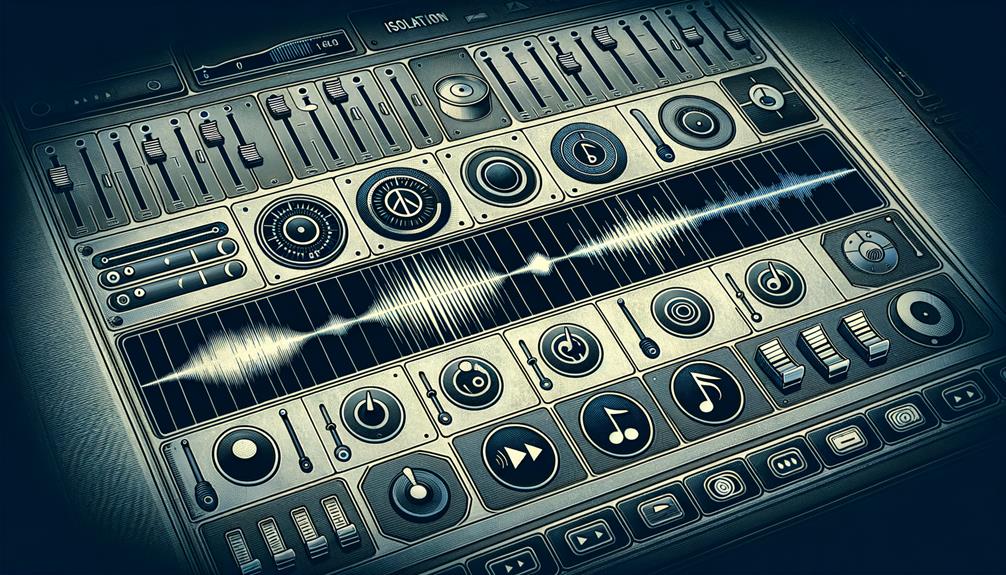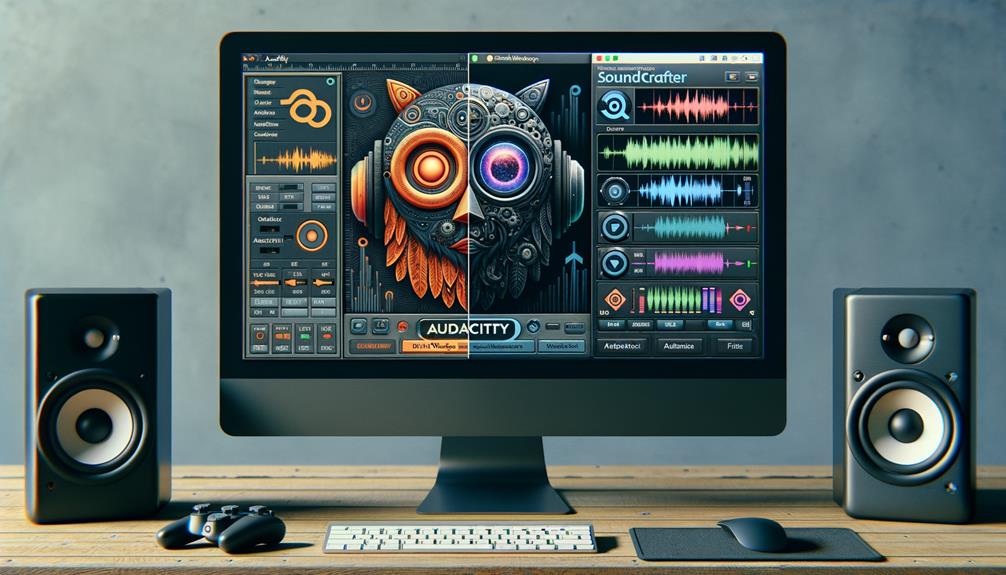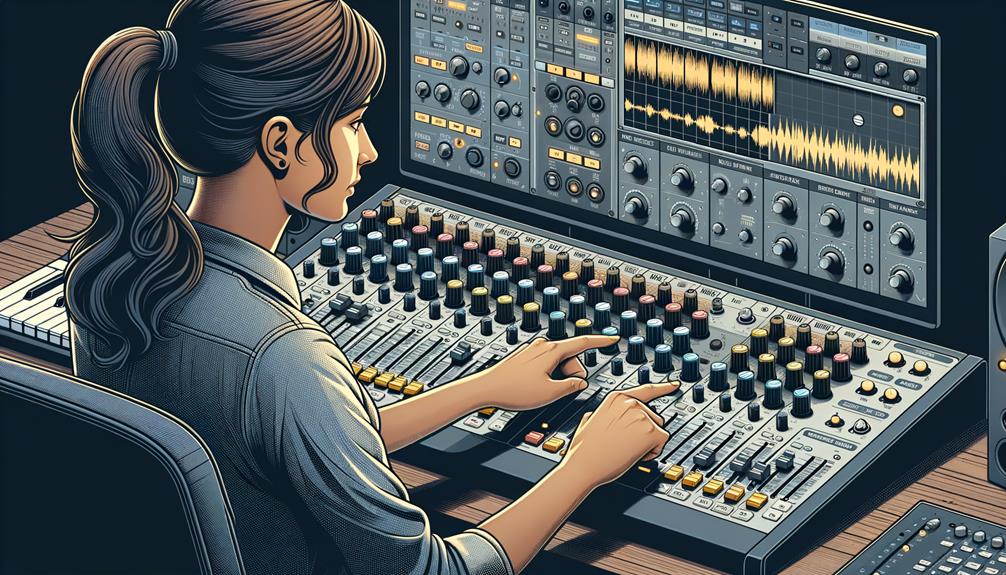No products in the cart.
If you’ve ever wanted to create your own karaoke tracks or instrumental versions of your favorite songs, you might be interested in learning how to remove vocals from a song using Audacity. It’s a process that can be both challenging and rewarding, and there are a few different methods you can try to achieve the best results.
Whether you’re a musician, a content creator, or just someone who loves to tinker with audio, understanding how to manipulate vocal tracks in Audacity can open up a world of creative possibilities.
Contents
hide
Key Takeaways
- Vocal reduction and isolation techniques in Audacity can vary in their success in removing or isolating vocals from a song.
- The effectiveness of these techniques is influenced by factors such as vocal position and frequency content.
- It is crucial to back up the original audio track before attempting any vocal removal or isolation editing.
- Alternative methods and tools, such as the Nyquist plugin effect or online tools like EaseUS Online Vocal Remover, can be used for vocal removal if Audacity is not suitable for the task.
Vocal Reduction and Isolation Technique
You can achieve varying degrees of success in reducing or isolating vocals from a song using specific techniques tailored to different tracks. Vocal reduction and isolation techniques aren’t universally reliable, especially without original multi-track recordings. The effectiveness of the technique is influenced by the position of vocals in the stereo field and their frequency content. When attempting vocal reduction or isolation, it’s crucial to back up the original audio track to prevent accidental loss.
To apply the vocal reduction and isolation technique in Audacity, first, select the track from which you want to remove or isolate vocals. Then, use the split tool to divide the stereo track into its left and right components. Next, apply the appropriate vocal reduction or isolation effect based on the specific characteristics of the audio track.
Audacity provides a Nyquist plugin effect that automates vocal removal and allows for specifying frequencies to avoid removing other elements, providing a tailored approach for different tracks.
Vocal Removal Using Split Stereo
After applying the split stereo technique to divide the stereo track into its left and right components, both channels are made mono and one of them is inverted to facilitate vocal removal. This method is a powerful way to remove vocals from audio files using Audacity.
However, it’s important to note that this technique removes everything panned in the center, not just vocals. Incomplete vocal removal can leave artifacts, especially with backing vocals or reverb. The effectiveness of this technique is influenced by the vocal position in the stereo field and frequency content.
To execute this technique in Audacity, start by splitting the stereo track into two separate mono tracks. Then, invert one of the tracks and mix them back together. This will cancel out the center-panned information, effectively removing vocals.
It’s crucial to back up the original recording before attempting any editing, as this technique can irreversibly alter the audio.
Vocal Isolation With Instrumental Track

Vocal isolation with an instrumental track can be achieved by employing specific audio processing techniques tailored to the characteristics of the original recording. To achieve vocal isolation with an instrumental track, follow these steps:
- Understand Track Characteristics: Different tracks require different techniques for maximum attenuation or isolation. Backup the original recording before attempting any editing.
- Consider Vocal Position and Frequency Content: The vocal position in the stereo field and frequency content greatly affect the effectiveness of the isolation technique.
- Beware of Artifacts: Incomplete vocal removal can leave artifacts, especially with backing vocals or reverb. Carefully listen for any remnants of the vocals.
- Instrumental Parts: In some cases, instrumental parts may be removed along with the vocals. Always check the isolated vocals against the original to ensure the desired outcome.
Troubleshooting Audacity Vocal Remover
When troubleshooting Audacity’s vocal remover, understanding the specific characteristics and nuances of the original recording becomes crucial for pinpointing and addressing any issues with vocal removal. Here are some troubleshooting steps and adjustments you can try to improve the vocal removal process in Audacity:
| Troubleshooting Steps | Description |
|---|---|
| Adjust Strength Parameter | Modifying the strength parameter of the Vocal Reduction & Isolation plugin can help improve vocal removal in Audacity. |
| Fine-tune High and Low Cut Parameters | Modifying the high cut and low cut parameters can fine-tune the vocal removal process in Audacity. |
| Try with Other Songs | Trying the vocal remover with other songs can help troubleshoot issues with vocal removal in Audacity. |
| Reinstall Audacity | Uninstalling and reinstalling the latest version of Audacity may resolve vocal removal issues. |
Additionally, consider adjusting the settings for a specific song or trying other vocal removers to potentially improve the vocal removal process in Audacity. Remember to always make a backup of the original mix before applying any vocal removal techniques. By experimenting with these adjustments and methods, you can effectively troubleshoot and enhance the vocal removal process in Audacity.
Audacity Alternative for Vocal Removal


An effective alternative for vocal removal in Audacity is the use of the Nyquist plugin effect, which automates the process and provides a streamlined approach. This alternative offers a convenient method for removing vocals from a song while retaining the original track intact.
Additionally, splitting a stereo track into left and right channels and inverting one of them can effectively remove vocals, although there’s some risk of removing instrumental parts.
Another Audacity alternative for vocal removal is the free online tool called EaseUS Online Vocal Remover, which ensures a smooth experience without format limitations.
Furthermore, if you encounter unusual stereo tracks with vocals mixed hard into one channel and everything else into the other, you can address this by splitting the track and deleting the unwanted channel.
These alternatives provide innovative solutions for removing vocals from songs, catering to those seeking efficient and effective techniques beyond Audacity’s native features.
Frequently Asked Questions
How Do I Remove Vocals From a Recorded Song?
To remove vocals from a recorded song, try vocal isolation techniques using audio manipulation tools. Use Audacity or Notta Online Vocal Remover for vocal extraction and instrumental track remixing. Experiment with sound editing and audio processing for track remix.
How Do I Clean up Vocals in Audacity?
To clean up vocals in Audacity, start by using vocal isolation and noise reduction techniques. Employ equalization and frequency manipulation for vocal enhancement. Engage in thorough audio editing and apply mixing tips for sound isolation. Finally, master the audio for complete voice cleanup.
How Do I Remove Audio From a Song in Audacity?
To remove audio from a song in Audacity, use vocal isolation and audio manipulation techniques. Utilize the software’s editing techniques for sound extraction and mixing tracks. This is essential in music production and sound engineering for effective vocal removal.
How Do I Separate Background Music From Voice?
To separate background music from voice, use vocal isolation techniques. Try background extraction, music separation, voice reduction, instrument isolation, and audio manipulation for sound editing, song remixing, acapella creation, and audio processing.
Conclusion
In conclusion, removing vocals from a song in Audacity requires careful consideration of the specific techniques available. The Vocal Reduction and Isolation effect, split stereo method, and instrumental track isolation are all viable options, but may require trial and error for optimal results.
It’s important to keep in mind that without access to the original multi-track recordings, complete vocal removal may not be achievable.
Consider exploring alternative software for more advanced vocal removal capabilities.




